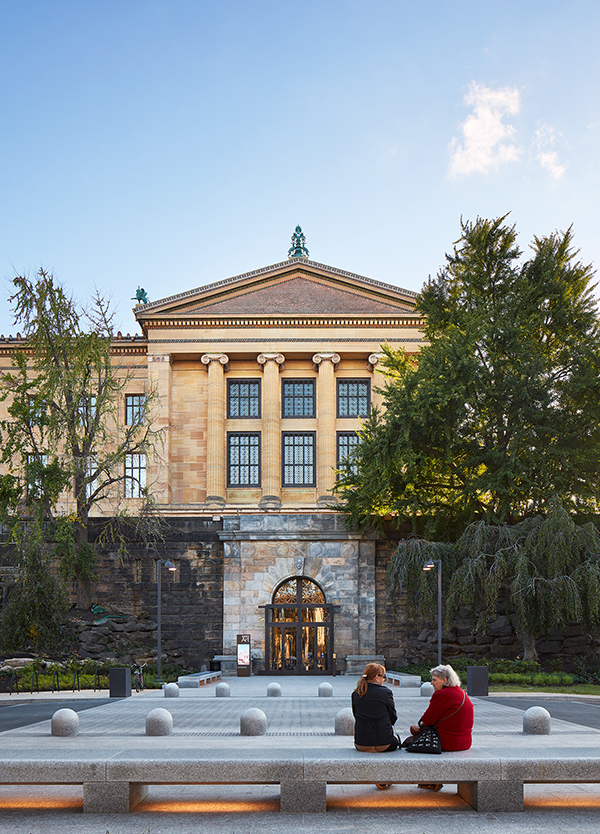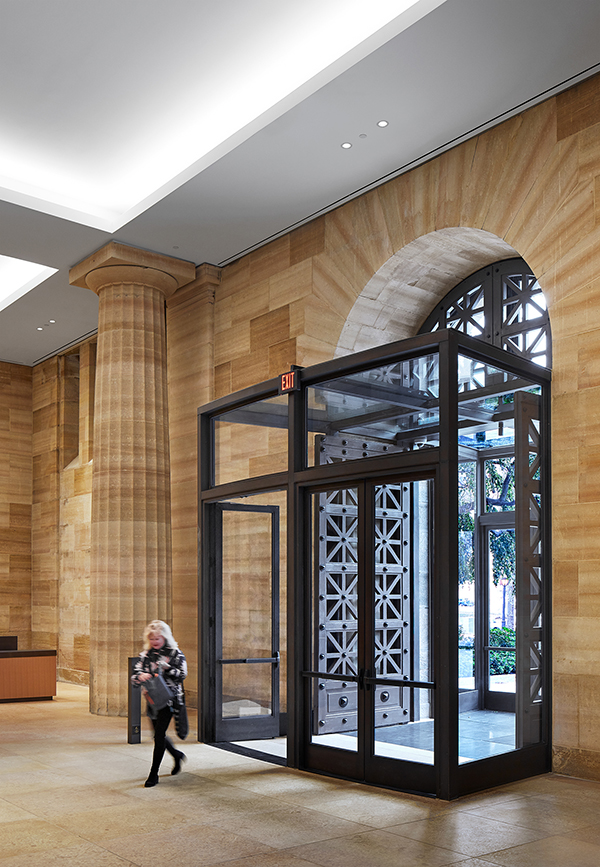
The Philadelphia Museum of Art broke ground on a major renovation in 2017. International architect Frank Gehry designed the multi-million-dollar renovation, which focused on opening up the museum’s interior with more public spaces, more room for art and easier navigation. This renovation included the design of bronze replica replacement windows and a series of custom curved vestibules that showcase new museum spaces.
The existing bronze windows were single-glazed, not energy efficient, and were experiencing serious condensation issues. Larry White, of California-based Architectural Window Design, suggested bringing in Hope’s Windows, which provides 100% customized work for each project.
The window design process
Hope’s Windows project manager Jim Gruber explains that the detailed window design process began when the architect shipped one of the existing original windows to Hope’s factory in Jamestown, New York.
Hope's research and development team went through with a micrometer gauge dimensioning of window profiles to get an exact replica. The Hope's team designed and engineered the custom-extruded window profiles and produced specific bronze extrusions for the design team. Hope added its thermal evolution technology to the window frame, enhancing it with a thermal break. A vendor sourced the 65 windows for the building’s lower level.
 The bronze vestibules
The bronze vestibules
In addition to the windows, Hope's produced five custom bronze curved vestibules. Three are being installed at the main entrance and one on the South elevation at an entrance primarily used by employees. The largest vestibule is for the North entrance, here an existing truck entrance with wooden doors is being converted into a foot traffic area with two pairs of doors and a large shaped transom to make new park space.
The new North vestibule features a unique design. There is a normal pair of doors in a plane with the exterior wall and vestibule six feet beyond. The doors protrude six to eight feet from the building with a glass roof overhead while incorporating the existing wood doors and transom into the design. Geary’s aesthetic goal was to enhance the new entrance for new spaces being introduced to the museum. Hope’s Windows had to meet several challenges with the North entrance vestibule, explains Gruber.
Challenges encountered
“The North vestibule is the most complex and is a true showpiece. Both pairs of doors are curved on plan. The hardware has to access the radius of the unit. The curved doors are swinging, and as they move, they still have to function,” Gruber says.
“On top, there is a curved skylight that is pitched. There are also sidelights with custom drains. Gutters guide water off a slope and into inside corner tubes, so water drains out the back side behind the wing windows. This means water drainage will not interfere with the walkway. You are limited to bronze because there is no galvanic action and all the components must work in conjunction with one another. Also, the doors are automated. There is a recess box with an automatic open feature for handicapped access that was worked in with the curved-on plan.”
Hope’s Windows came up with design solutions for all the challenges they encountered. They then produced a partial mockup of the complex North vestibule at Hope’s factory to test whether it would meet expectations. The partial model was installed, glazed and sealed on a mocked-up concrete pad. Hope’s placed the vestibule on the pad and met at the site of the mockup to demonstrate operations to the architect’s team. After a design review meeting, Hope’s revised shop drawings, produced a model, developed final shop drawings for approval and then performed fabrication.
“This was an extremely challenging project and Hope’s Windows came through with flying colors, fabricating a stunning vestibule that met our vision perfectly,” says Bill Childers, senior associate, Gehry Partners.
Hope’s team continued to work hand in hand with the architect, contractors and other trades during construction. For example, the stainless-steel grill on the floors is heated, so Hope’s had to work with the concrete contractor to ensure the pitch for floor closures is in the right location. The electrical conduit runs through the frames and the team had to coordinate wiring issues. They also had to produce physical templates for use by electrical, concrete and other trades.
The custom curved vestibules have been a major success in highlighting new and renovated museum spaces, according to a company release. The detailed planning, including mockups and reviews of the vestibule design and operations, resulted in a feature that the client is extremely proud of. During the installation of the North vestibule, the Museum’s director of operations said, “The vestibule is beyond my expectations.”

